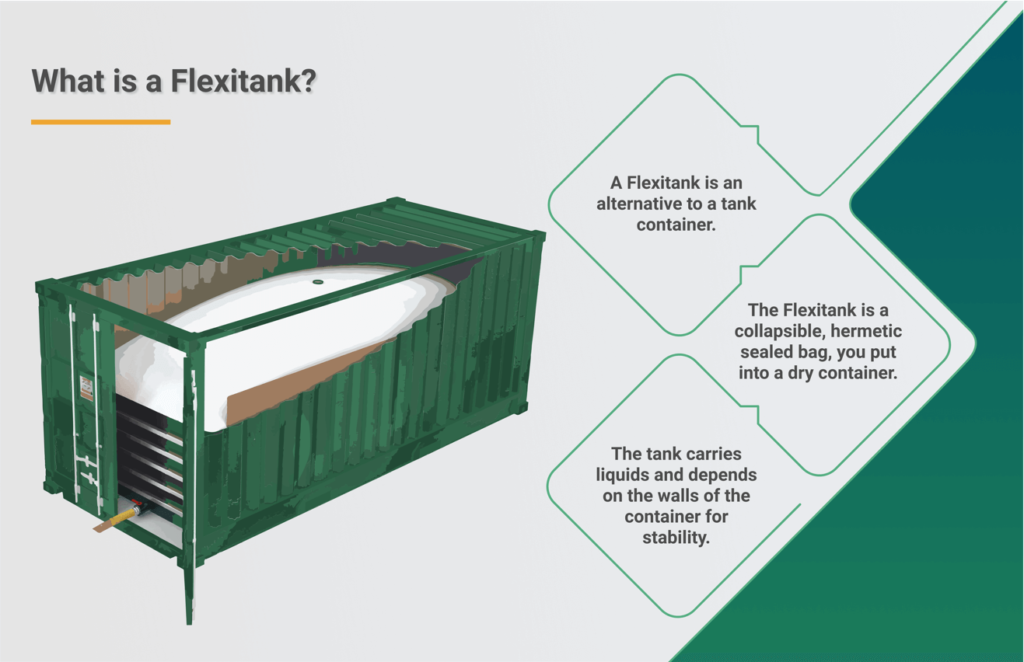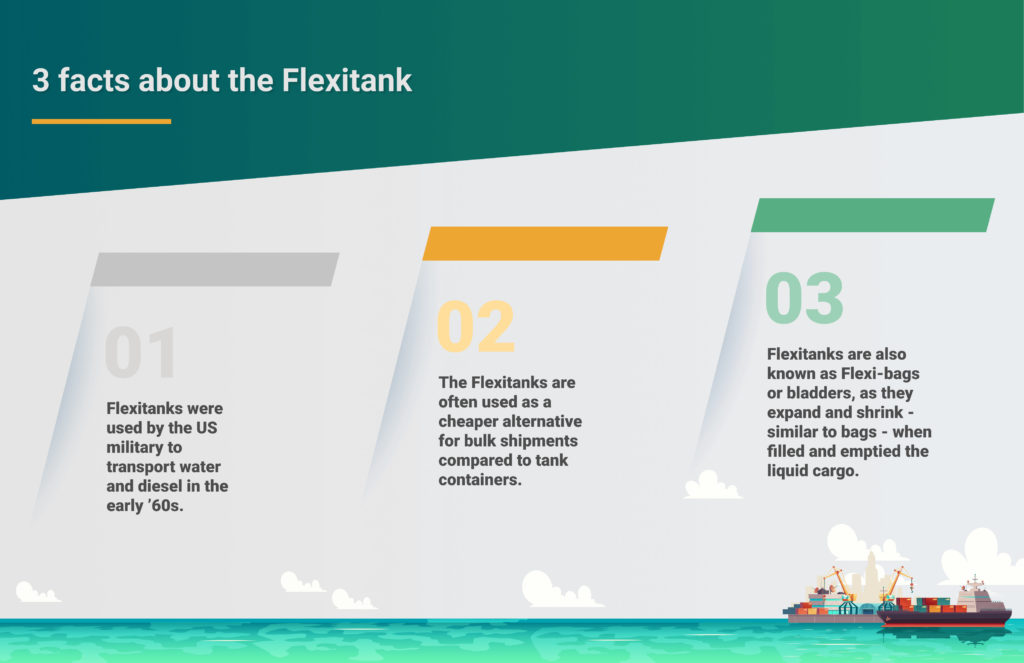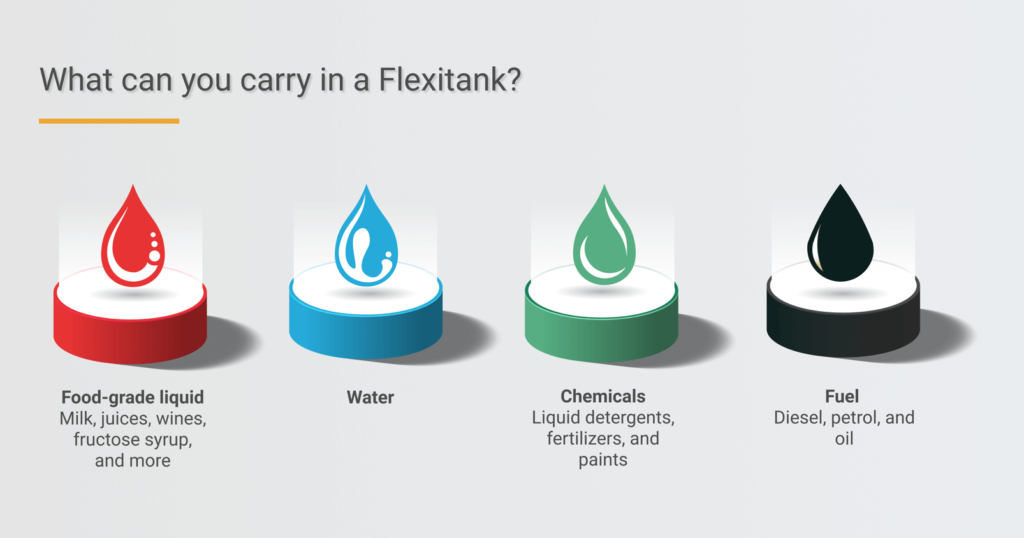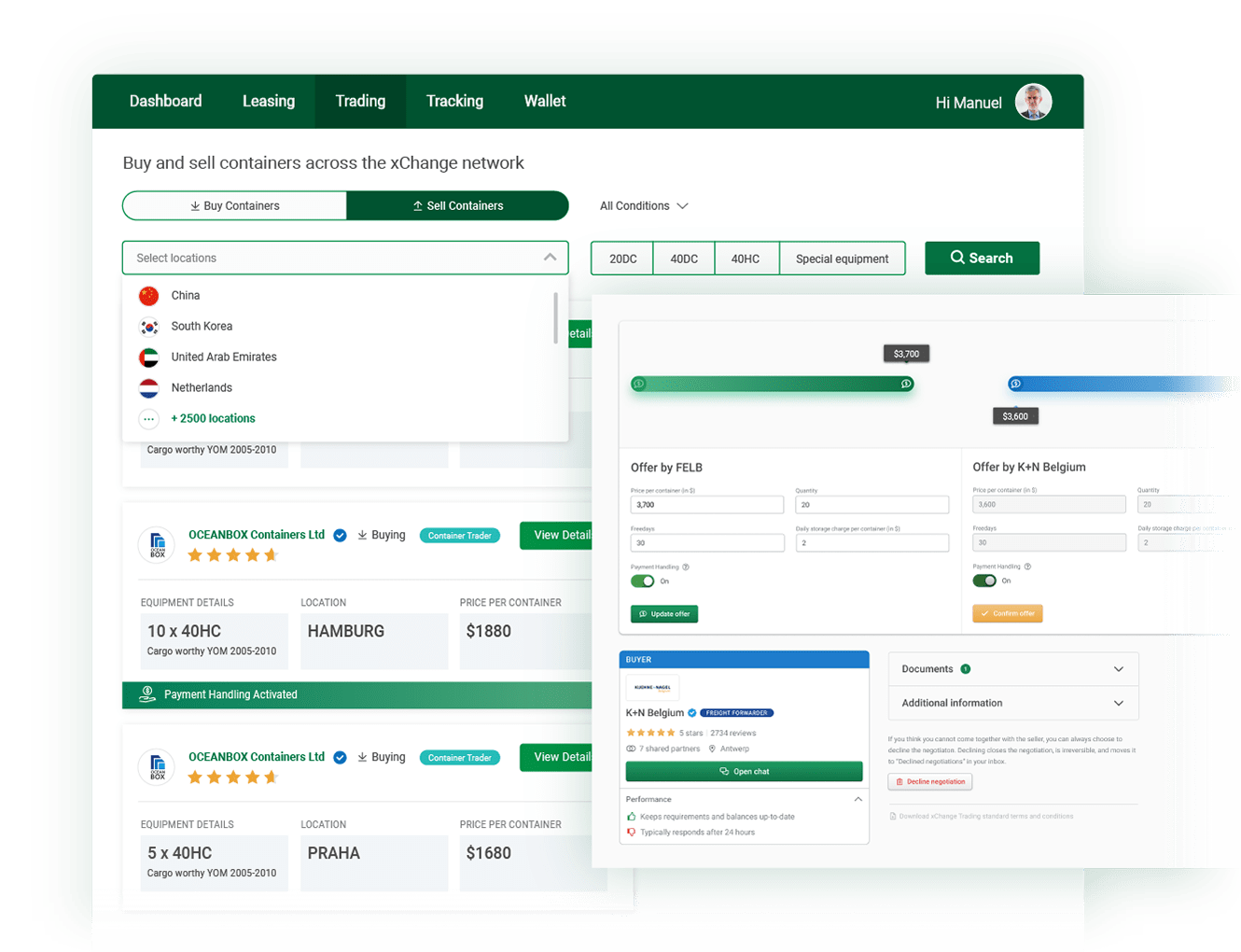Flexitanks are the easiest way to transport non-hazardous cargo like chemicals and food items in bulk. Read on to know about what flexitank is, its uses, and recommended capacity for by liquid type.
More than 11 billion goods are shipped globally every year. So, freight forwarding by containers is a lucrative choice to ship bulk goods over long distances. Different types of containers are used for transshipment (depending on cargo and shipment requirements). However, Flexitank containers are a popular choice for shipping non-hazardous liquid products in bulk.
Here’s everything you need to know about Flexitanks, including its uses, manufacturing, history, capacity, and where you can find them!
What Is A Flexitank?
There is always a requirement for bulk liquid items to be shipped from one place to another. Shippers and companies were looking for a way to use a comparatively cheaper option than an ISO tank while still meeting the transportation needs for liquids.
In came Flexitanks.

Flexitanks are flexible tank containers that offer secure storage and shipment of liquid cargo in bulk. To give a technical definition:
“A Flexitank can be described as a hermetically sealed, collapsible, and flexible bag or bladder, which is fitted into a twenty-foot Dry Van (DV) or standard container. The Flexitanks commonly used by the industry can hold up to 24,000 litres of liquid cargo. Flexitanks are used for the transportation of non-hazardous liquids.”
The majority of flexitanks offer a capacity between 10,000 liters to 24,000 liters on average. Others are customized according to shipment requirements – ranging from 1,000 liters to 100,000 liters.
History of Flexitank Container
The earliest concept of flexitanks was developed during World War II to transport diesel and fuel by Marston Excelsior — as “non-metallic fuel tanks with self-sealing covers through collaboration with ICI [made of] fabric sandwiched between layers of rubber-like material”.
Following this, in the early 1960s, the US military used flexitanks to store and transport water and diesel fuel. Later, in the 1970s, shippers in the United Kingdom needed to move liquids overseas. But ISO tanks were an expensive option (costing about $5000 each). So, they decided to transport liquids in comparatively cheaper, heavy-duty rubberized bladders.
In the 1990s, these rubber tanks were replaced with more durable and cheaper material, thermoplastic (PVC), retailing at $1850 apiece. These formed the primary prototype for present-day flexitanks, and quickly became a preferable choice for chemical shipments.

In the early 2000s, newer, cheaper, and recently known versions of flexitanks entered the market. Made from multiple layers of thin polyethylene.
Flexitanks became a one-way, disposable market, offering “supply and fit” customized service options at affordable costs to shippers and companies. As the world’s economy developed, freight forwarders and the logistics industry utilized flexitanks to transport all kinds of non-hazardous liquids using flexitanks. By setting them in a typical dry holder.
What Is A Flexitank Made Up Of?
A Flexitank container is a bulk liquid storage tank. Made of numerous layers of polyethylene and a woven polypropylene outer covering.
They are manufactured using different types of materials such as:
- Multilayer polyethylene
- Single and double layer polyethylene
- Barrier tanks
- PVC
- Bottom discharge
READ MORE: Understanding intermodal tank types: All you need to know [2021]
5 Uses For A Flexitank
Due to its high efficiency and exceptional contamination prevention, flexitanks are used for non-hazardous chemical transportation. But also for food-grade goods like edible oil, fruit concentrates, drinks, among others.
Fuel storage
Liquid fuels including gasoline, diesel, and oil can be stored and transported in Flexitanks easily. They are primarily utilized for storage. Coupled with a protective lining and a berm, to provide extra containment safety to the surrounding environment.
Potable Water Storage
Flexitanks occupy very little space and are easy to transport. In case of emergencies or during disaster reliefs, they are also used to store and transport potable water.
Food-Grade Liquid Storage
Flexitanks enable the safe storage of food-grade liquid ingredients, such as milk, juices, wines, fructose syrup, and others.
Industrial Chemical Storage
Flexitank containers are ideal for transporting and storing industrial liquid chemicals. Such as liquid detergents, lubricants, fertilizers, liquid latex, and paints, among others.
Single-Use & Primary Storage
Flexitanks can decrease the overall storage costs in cases where liquid storage is not for a long duration.

5 Advantages To Using A Flexitank
Flexitank containers have an increasingly growing demand as they are economically viable for bulk traders for transporting non-hazardous liquid cargo. They also offer better protection against liquid cargo contamination.
Effectively, flexitank storage tanks have made transportation more efficient, cost-effective, and also have a lesser environmental impact. They are becoming a preferred replacement for the traditionally used drums and ISO containers.
READ MORE: ISO tank container rentals: Your guide to know it all [2021]
Here’s why shippers prefer Flexitanks:
Cost-Effective Option
Flexitanks are less expensive than drums, IBCs, and ISO tank containers. The cost of using flexitanks is 33% less than what is needed to spend when transporting bulk liquid using traditional bulk liquid containers.
More Capacity
Flexitank containers can carry 15% more payload than what is carried by IBCs. 44% more than drums. And 50% more than bottles. So, they offer more capacity while being an economically viable option for shippers.
Preserves Product Quality
Flexitanks keep the quality of liquid carefully intact. They are composed of several layers of polyethylene, each fitted with a pump and a valve. Making it airproof, waterproof, and weatherproof. They are mostly designed for single-use which contributes to reducing the risk of contamination considerably.
Faster Loading & Unloading
Flexitank storage containers do not require a forklift to load or unload. This makes the entire loading and unloading process faster by up to 90%. It also makes Flexitanks a cheaper option as compared to the cost of using drums. As well as IBCs with a reduced product loss during the process.
Requires Less(er) Labor
As flexitanks are convenient to handle, load, and unload, the involvement of the labor is comparatively lesser. This makes the logistics revenue considerably lower.
Recommended Flexitank Capacity by Liquid Type
The most widely available flexitank containers come between 10,000 liters and 24,000 liters. Flexitank models are available in 16,000L, 18,000L, 20,000L, 22,000L, and 24,000L.
Some companies also offer a range of 1,000L up to 100,000L — depending on the customer’s requirements.
Here’s a reference table for various types of liquids and corresponding flexitank capacity:
| Type of Product to be Transported | Density
(kg/m3) |
Recommended Size of Flexitank |
| Latex | 60 – 95 | 19,000 L |
| Polyol | 1,100 | 19,000 L |
| Glycerin | 1,260 | 20,000 L |
| Palm Oil | 887.5 | 21,000 L |
| Olive Oil | 905 | 22,000 L |
| Wine | 985.7 | 24,000 L |
General Misconception For Choosing Flexitank Capacity
Myth: A flexitank with a greater capacity as compared to the total quantity of load would be a better choice for the bulk load of liquid.
Fact: It is the density/specific gravity of the liquid which plays a crucial role in determining the correct size of flexitank to be used.
Get a Flexitank That Fits Your Needs On xChange
So, now you’ve had a chance to learn more about Flexitank. Maybe it’s for you – or maybe you’re looking for other tank containers?
Regardless of where you’re at, finding your next container has never been easier.

Right from choosing the perfect flexitank or tank container, to buying or leasing it. All you have to do is open a tab in your internet browser, and scroll through the offers on our online marketplace. There’s no commission, complete pricing transparency, save money transfer – and only vetted companies on the platform.
Want to see how easy it can be to search and buy containers safely online? Click on the banner below and book a free 15-minute call with our team. They’ll show you the marketplace in action – and how you can find your next tanks quickly, easily, and safely.
Flexitank: FAQs
How do you use flexitanks?
A new flexitank is positioned carefully inside a general dry container. The liquid to be transported is pumped into it using a dedicated pump and hose. Upon filling, it is sealed and a bulkhead or a sturdy frame is used to stop it from moving inside the container.
How do you unload a flexitank?
The front end of the flexitank is lifted and rolled slowly towards the door so that the liquid residue can flow easily towards the product valve. The process is continued until the liquid inside the flexitank is pumped off completely.
Are flexitanks reusable?
While most flexitanks are made for temporary, one-time use, others can contain a liquid for years at a time, or be reused as well.
How many liters of liquid can a flexitank hold?
Depending on the density of the liquid, these flexitanks are available with capacities ranging from 10,000 to 24,000 liters. Some companies also offer a range of 1,000L up to 100,000L.
How much does a flexitank cost?
Flexitanks are very cost-efficient. The cost of the flexitank depends on what type of Flexi bag is purchased. The price of a flexitank container set ranges from 100 USD/set up to 500 USD/set.



